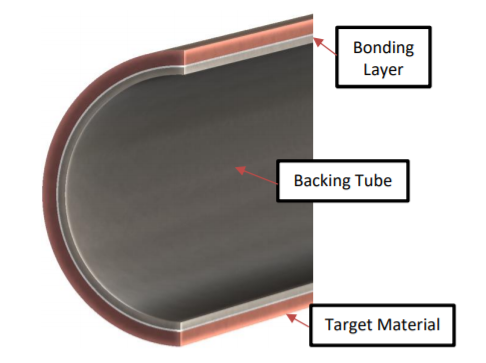SAM®Sputtering targets are the material that is indispensable during a sputtering process. Sputtering targets are normally comprised of one to three distinct parts, including the backing tube, a bonding layer, and the target material. The figure shown below is an example of rotatory sputtering target. Among them, the former two parts are not unnecessary, depending on the type of materials required for the sputtering process and the manufacturing techniques that are available to produce the target. If the target material is brittle and can be easily broken during the sputtering process, it is necessary to require a target bonding service.

In terms of the target material, sputtering target varies from pure metal to ceramics. Many pure metal targets are stronger, thus some of them can be made into single piece or monolithic targets without the backing tube or a bonding layer. In contrast, ceramic targets usually require the three-layer construction technique because they are not strong enough to support their own weight and the pressure inside the tube.
Ceramic targets are usually bonded to a stainless steel backing tube because of its non-magnetism and low coefficient of thermal expansion. The thermal expansion coefficients of the backing tube material and the target can never be ignored, because a great difference between these two coefficients can lead to large stress concentrations in the target material during the sputtering process that can cause the ceramic materials to crack and break off.
In addition to stainless steel backing, indium bonding is used more frequently due to its low melting point, good thermal conductivity, low chemical reactivity, and good adhesion to most materials. Indium has the best thermal conductivity of all available bonds and is the most efficient at drawing heat away from the target. Most materials can be indium bonded but there are a few exceptions, mainly due to the low melting point of indium. Indium has a melting point of 156.6°C so temperatures in excess of 150°C will cause the bond to melt and fail.
Stanford Advanced Materials is devoted to machining standard backing plate. Please visit https://www.sputtertargets.net/ for more information.
